Wine tasting can be so intimidating. When preparing to taste wine with a room of (what may seem like) wine experts and maybe even the winemaker, questions may race through your mind. “Should I sip or spit?” “Should I swirl before sniffing?” And most perplexing, “What on earth should I say about the wine?”
Fortunately, there’s no need to be intimidated. Most people who work in the wine industry are eager to share their knowledge and help people understand wine. This is always apparent in Lodi, California, where a group of boutique wineries are taking risks in winemaking and are happy to share their wines with the public.
On my recent stop in Lodi for their annual Zinfest, a weekend-long celebration of Lodi wines that includes the Zinfest Wine Festival, I attended free Wine School seminars and picked up some very good wine tasting tips that I thought you’d enjoy, too.
Fred Swan, Certified Sommelier and instructor at San Francisco Wine School, presented the seminar “Everything you always wanted to know about wine tasting.” I loved his low-key, friendly approach and complete lack of pretension as he presented wine tasting in an approachable way, with something for both novices and seasoned wine lovers.

According to Swan, the steps to tasting wine are as follows:
1) Look.
Look at the color of the wine. Think about the intensity of color. Wines get darker as they age in barrels and as they get older.
Is the wine clear or cloudy? A cloudy or dull looking wine may be in bad condition.
What about “legs” as so many of us learned to look for? Fred told us to forget about legs since they really tell us nothing of any importance.
To try this out, we looked at the Borra Vineyards Vermentino and noticed that the wine was pale, almost white in color. Comparing it to a Chardonnay a few minutes later, we could see how aging the Chardonnay in oak barrels resulted in a darker yellow while the Vermentino kept that light, almost translucent color due to being aged in stainless steel tanks instead of oak.
Read more: Best value Cabernet Sauvignons from the U.S.
2) Sniff. Then swirl and sniff again.
Sniffing the wine before swirling it allows you to get a sense of the wine’s aromas before they have been fully released. Swirling the wine around in the glass allows the aromas to be released, so you will probably find that the “nose,” or how a wine smells, is different before and after swirling.
Of course, so much of what goes into the wine tasting experience is based on smell, and smelling the wine before tasting gives you a sense of the wine’s aromatics. On this day, aromas ranged from citrus and perfume to florals and cherries. You can think of wine aromas as belonging to various categories:
fruits: red fruits like cherries and strawberries, citrus, tropical fruits, stone fruits like apricots and peaches
wood: oak, lead, charcoal, smoke
spices: baking spices, coffee, chocolate and vanilla
earthy aromas: soil, leather, tar, barnyard
green grass or vegetables
However, if you smell rotten eggs or vinegar, your wine is probably bad.
Read more: How to host a wine tasting party
3) Taste.
If this is your first wine of the day or the first red wine after trying whites, the wine may seem strong at first. Try swirling the first sip around in your mouth and spitting it out (or swallowing) before taking the second sip. And by the way, spitting wine into a container (or on the grass!) is perfectly OK, and you’ll see lots of people do it. Go with what makes you feel comfortable.
Swish the wine around in your mouth for several seconds and, if possible, breathe in a bit of air through your lips. Spit the wine out or swallow it, and notice the following components of a wine’s body:
–Taste for the wine’s body and feel:
Acidity: Pay attention to how the wine feels on the tip of your tongue. Is it sweet or dull, or is it refreshing and crisp? This tells you about the acidity of the wine. If the wine has a good amount of acidity, it will make you feel a bit thirsty so that you want to have more.
Acidity also helps a wine pair well with food. A great example of a wine that has a nice amount of acidity is Markus Wine Co.’s white wines, all of which are super refreshing and leave me wanting a second glass.
Viscosity: Fred Swan told us to think of the wine in your mouth like milk, and I found that analogy helpful. Does it feel like water, skim milk, whole milk, or cream? Light-bodied wines feel more like skim milk while full-bodied wines produce a heavier feeling in the mouth.
Tannins: Tannins produce that grippy feel or drying sensation on the lips and the front of tongue. This feeling can even be in the whole mouth with wines that have more tannins (e.g. Petite Sirah). Tannins come from the grape skins; since reds stay in barrels longer than whites, they have more tannins. Tannins adds to the body and creaminess of a wine and help reds go with food.
Alcohol: A sign of a wine having high alcohol is when a wine burns as it goes down or makes your breath feel hot.
–Taste for the wine’s flavor:
Next, notice the flavors. You might need to take another swirl to do this. If you’re tasting Chardonnay, you may get hints of tropical fruit, butter, and even caramel; if you’re tasting Zinfandel, you may get cherry, blackberry, pepper, and spice; and if you’re tasting Petite Sirah, you may taste blueberries.
Fred Swan reminded us, however, that flavors are subjective. For example, saying that a wine tastes like blackberries means different things to different people as flavors are connected to memories and personal perceptions…if you think of blackberry flavor, is it freshly-picked blackberries from a neighbor’s yard, blackberries that are barely ripe from the local market, blackberries in a pie, or blackberry jam? And the ways in which people perceive those different things affect how they define flavors.
What about oak?
You hear a lot about oak when wine tasting. Here’s what Fred Swan had to say about oak: Neutral oak doesn’t give any oak flavor. French oak is more subtle than other oaks. American oak brings more perfume or aromatics while French oak gives more tannins.
–Finally, consider the wine’s balance.
Do the flavors and aspects of the wine’s body seem in harmony? If one aspect stands out too much, such as really strong tannins or alcohol, then the wine may not be balanced (but it may improve over time, especially if it’s a red wine with high tannins).
Most important, what do YOU like?
Now that you know how to taste wine and understand a bit about tannins, oak, acidity, etc., ask yourself what types of wines you like.
What are your favorite types of wines? Any wine tasting tips you would add?
P.S. 7 tips for wine tasting and many more blog posts about wine

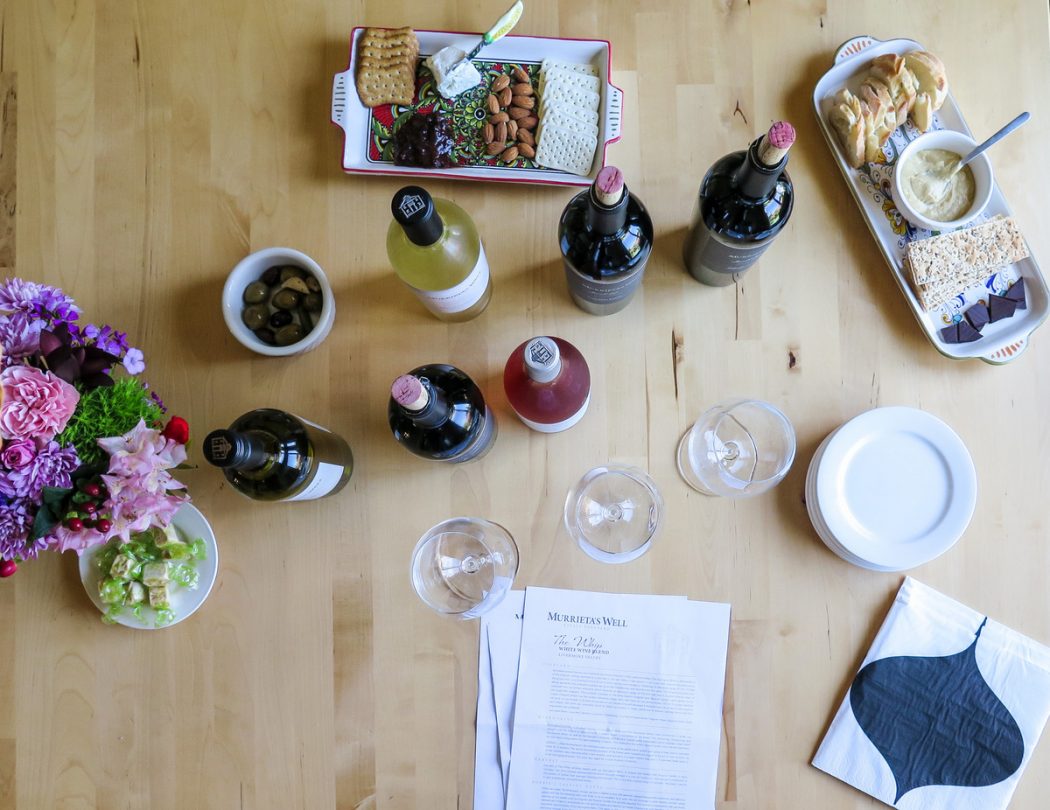
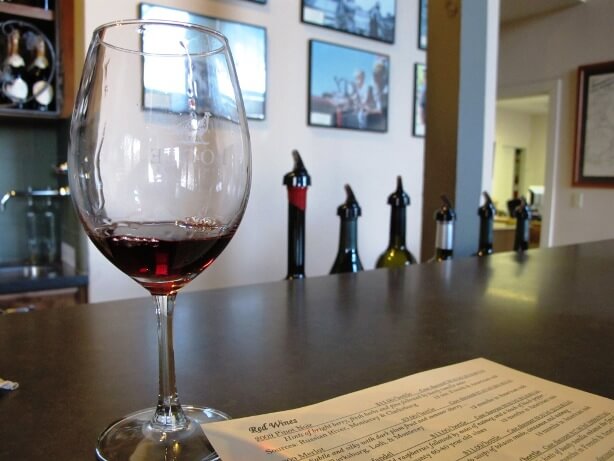
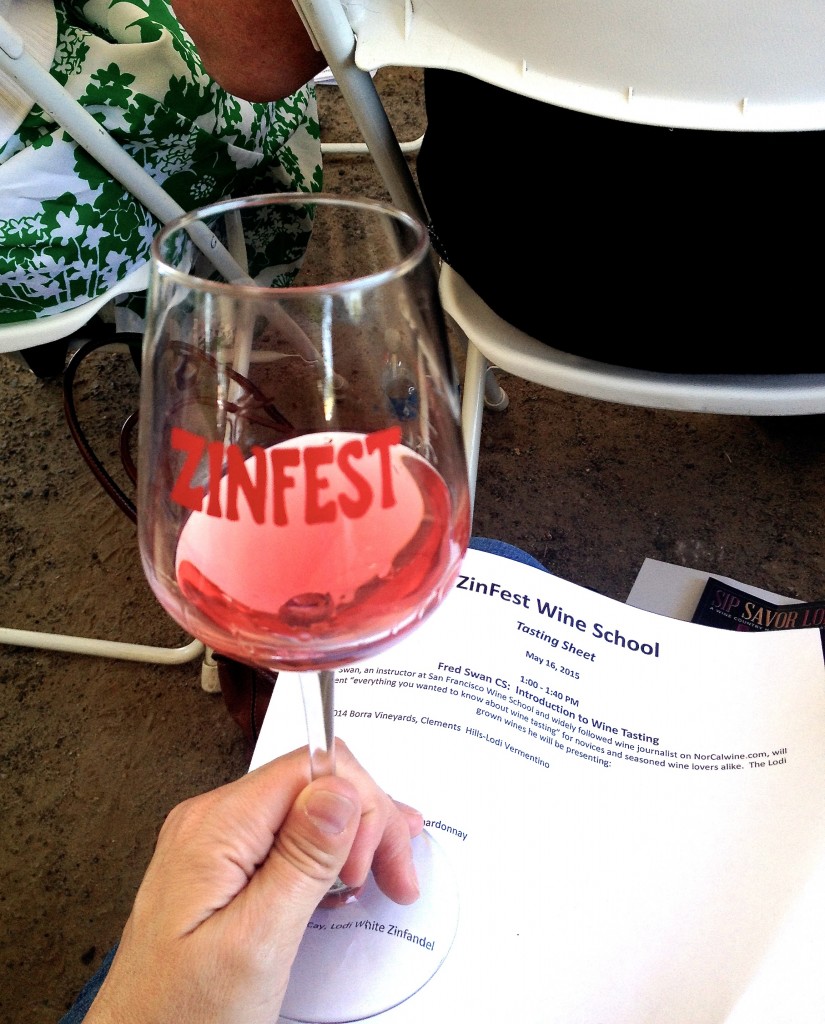

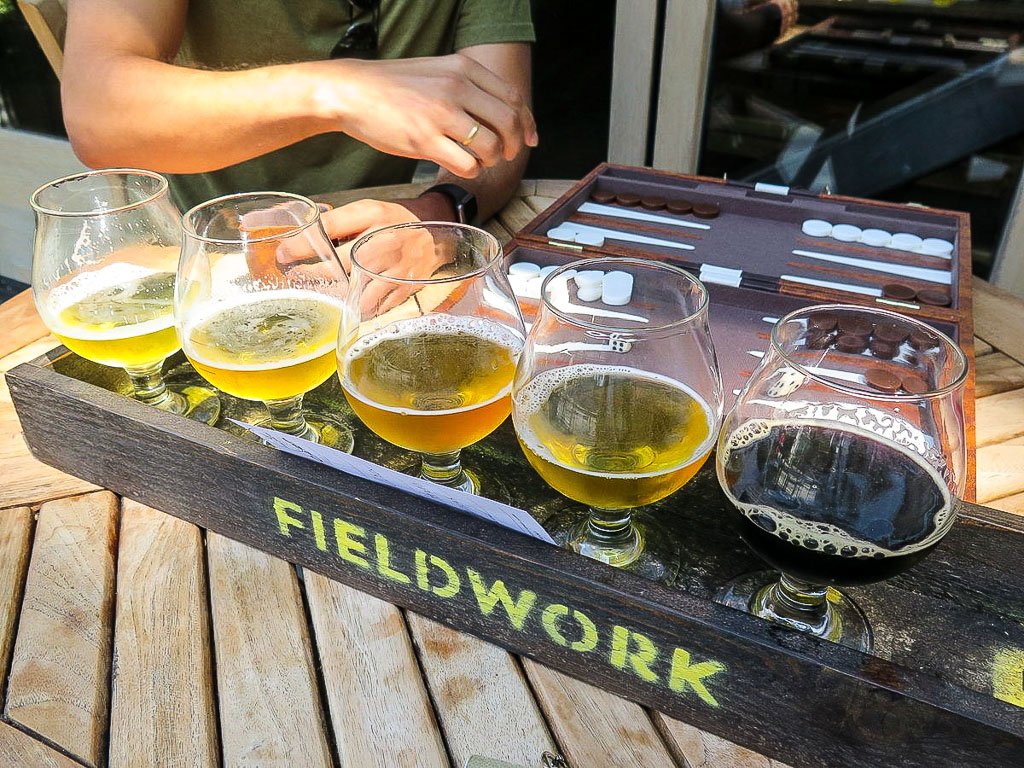
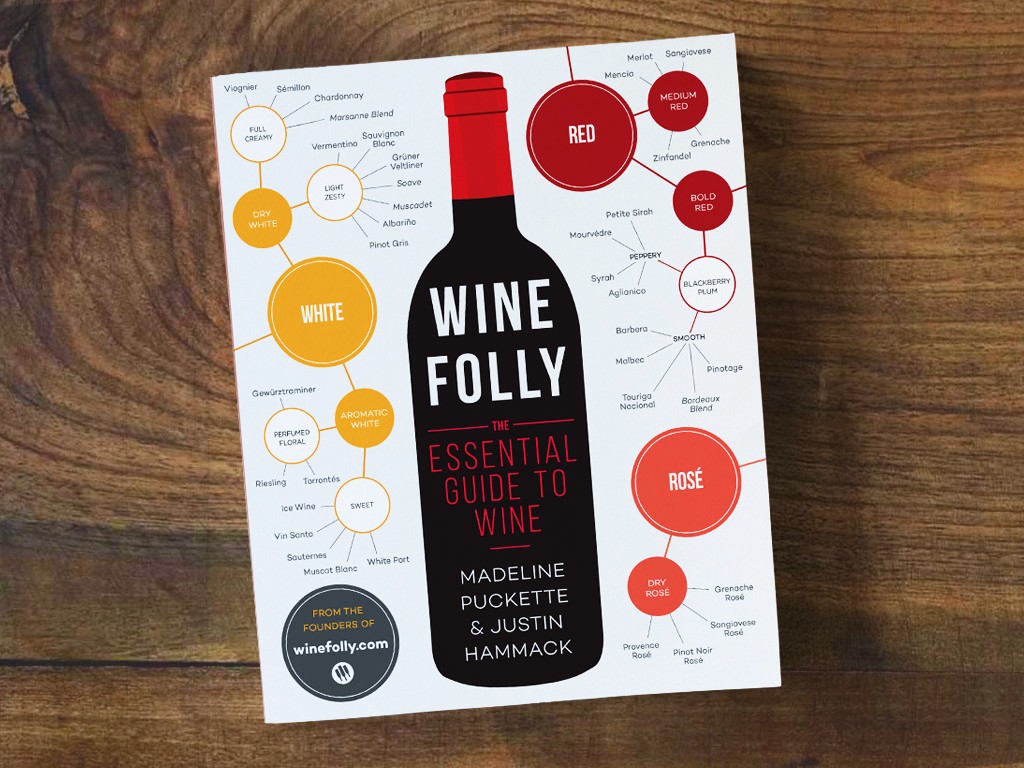
Some really great suggestions.
I find that if you do a few of these simple steps while not worrying what you “should be” tasting and smelling but rather just going off your own palette it is much more enjoyable. It’s surprising how many people automatically worry about “snobs” when I suggest wine tasting as a fun activity. The wine community, at least here in the Okanagan, is very laid back and fun.
What a great primer! I’ve gone through these types of classes in the past and still always forget some things…like do you swirl whites? I’ve learned to just go with it and not worry too much about what others might be thinking. The tasting rooms that I enjoy the most have pourers that jump and and discuss the wine, flavors, aromas, aging, oak vs steel, etc. instead of just the “this is our xyz, aged xx years in steel, what do you think.”
I worked with Fred for years in our former professional life, he and his wife are an amazing couple and Fred is SO knowledgeable when it comes to wine! I try not to let all the protocol get to me and just enjoyt the tasting! Who cares what others think as long as you are enjoying yourself!
I’ve been wanting to learn more about wine. These tasting tips are great and easy to understand.
Jenna, a great outline for our next wine-tasting; thank you for sharing Fred’s pointers! I agree with Murissa above as far as what’s ultimately most important is how one personally responds to a wine. Taking certain steps helps to pinpoint what characteristics you favor, or don’t like, but a tasting should ultimately be fun. We learn something new every time we do one. Though it might sound cliché, winemaking is truly an art.
Fun is right. I love that most of the winemakers and tasting room managers here are emphasizing that. I rarely go somewhere where I feel the place or atmosphere is pretentious.
this is such a great post! i took a wine class once, but immediately forgot everything i learned once we started tasting our wines.. 😛 oops! i always found it strange when people picked up a leather taste. maybe i just haven’t developed my palette yet.
I have to admit that leather escapes me, too!
Great tips! I absolutely LOVE wine tours and dream of one day being in expert in wine … but for now I’ll stick to just drinking it 🙂 I still find it difficult sometimes to figure out the tones and flavours of the wine.
Me too. Wine is so complex…I love it, but there’s still much to learn.
A great primer – except the advice about ‘legs’. I guess he’s referring to the debate about legs over the last decade or so (all very interesting) which dispelled the myth that a wine with great ‘legs’ is a great wine. While there are loads of great wines that don’t have great legs, legs still tell us some things, such as it’s a wine with a lot of alcohol (something we could have read on the label of course) so it’s going to be a heady wine. Must get to your wine regions there one of these days.
Yes, I think he was referring to that myth that many people still believe that good wines have legs.
Great tips! Wines bring out a comfort to the peoples mind because of its good taste. I too love to have wine.
I think there’s also something to be said for actually going to the individual wineries and experiencing them first hand. That experience can sometimes take a good wine and put it over the top.
So true! Isn’t it true that wine tastes even better when you’re actually at the winery?
Hi, Jenna!
Thank you so much for sharing such an informative tips regarding this topic. I’m getting ready for the holidays. So, I’m not that quite good at wine tasting yet but I will apply this tips. It will be my first time planning a family gathering at my new home so I want it to be perfect. My dad really loves wines. Anyways, great post! 🙂
Great tips. But I’m hoping I never come across any wines with “barnyard” on the nose. 🙂
Every person has own taste and now this time everymen know about the advantages of wine. The US, California city is the most famous place for wineries. They export their brands all over the world. Last days ago i heard about Francisco Wine School seminar. In that event, everyone shares our knowledge about wine. I love the apple wine in red color because its taste is good.
There really are a lot of different things that you can do to increase your wine tasting experience. I feel that the advice you give about how to properly taste the wine is particularly important. After all, the whole tasting of the wine is one of the most important parts of the trip, so you want to do what you can to get the most out of it. http://www.texaswinetrail.com/wineries/1851-vineyards